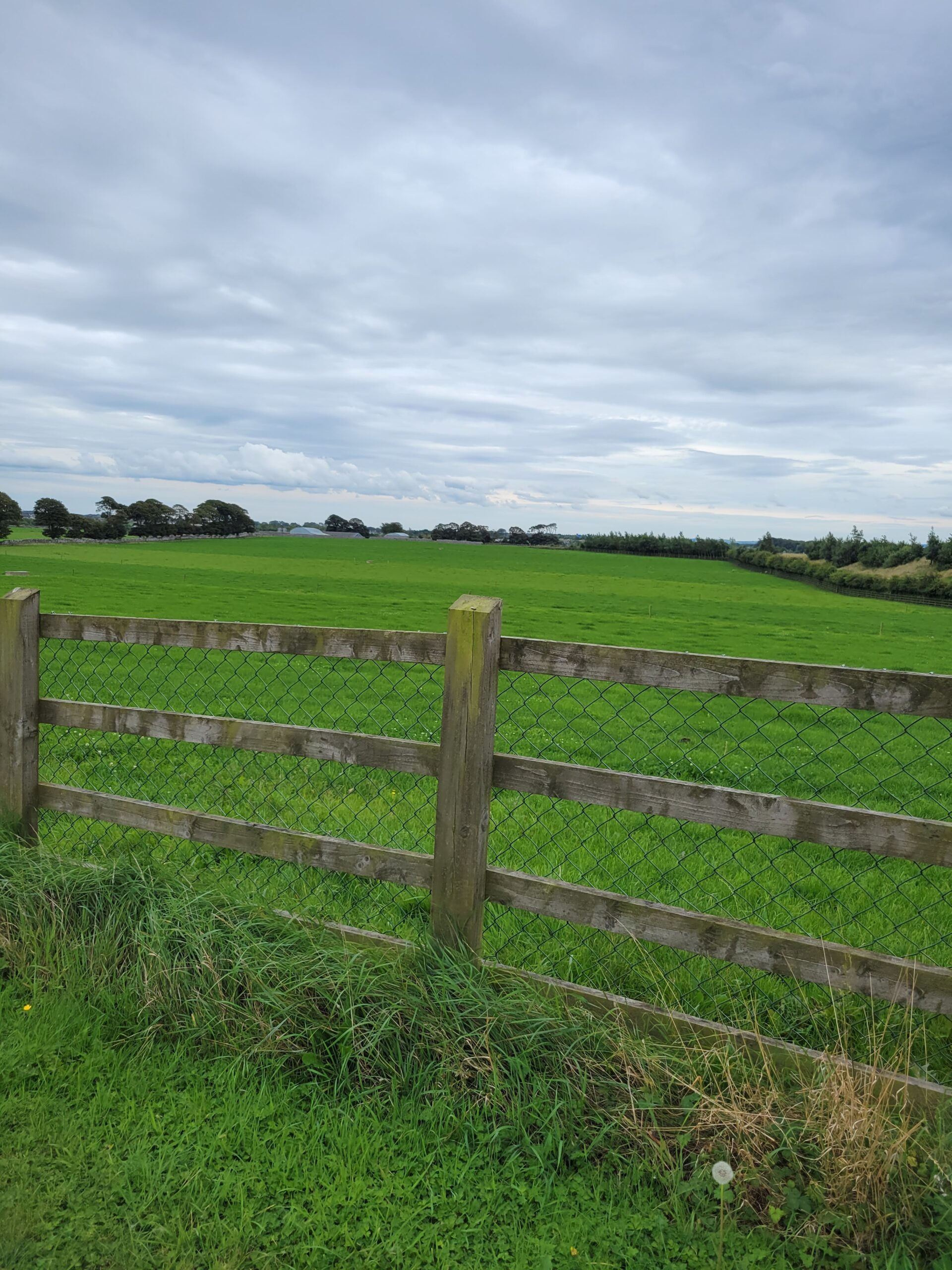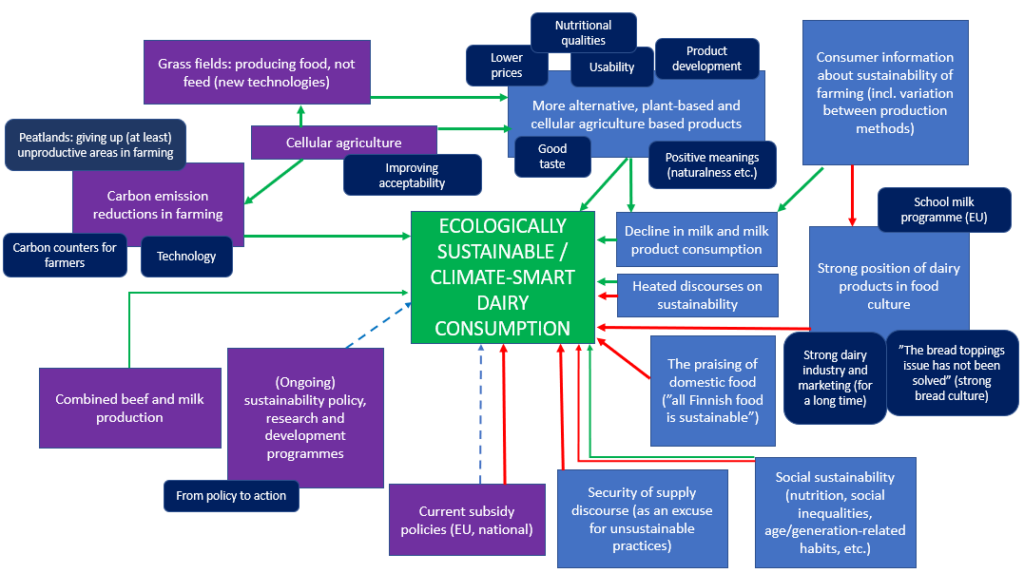
Research
Impact Pathway Maps
To understand the aspects and connections within each specific dairy production system in the SmartDairy project, each country team designed an impact pathway related to their country and case study focus. Those impact pathway maps are below with a small description.
Ireland

In Ireland, interviews with stakeholders, industry experts, and farmers directly contributed to the development of this impact pathwauy map for carbon market implementation in the dairy sector. Their insights shaped an understanding of barriers and solutions. Challenges include high implementation costs, insufficient information, and social pressures on farmers to reduce greenhouse gas emissions, affecting their willingness to engage. To overcome these hurdles, targeted solutions are needed. Providing incentives to ease adoption costs and offering comprehensive information and clear regulations are essential. Empowering farmers with knowledge and involving them in policymaking ensures that initiatives align with their needs. Integrating farmer perspectives into policy design enhances practicality and acceptance within the farming community.
Italy

The Italian impact pathway describes how the steps of the dairy supply chain (i.e. primary production, transformation/industry, distributions/marketing, consumption/ preparation, and waste recovery) interact with relevant subsystems. The challenges to dairy food systems’ transformation in light orange are shown, while in violet are the enabling factors; the bigger the font, the more the topics have been mentioned. The supply chain is shaped by the interplay between technological change, mainly in feeding systems and dairy processing, with a strong demand for efficiency, production cost reduction and premium prices; and by consumers’ preferences as main drivers for quality and sustainability standards (i.e. animal welfare, packaging, low carbon emissions). Policy and regulations trying to align the provision of public good to societal preferences while supporting training, education, and research further drive the dairy supply chain towards increased sustainability.
Finland

In Finland, the aim of the expert interviews was to map expert viewpoints on factors that have an impact on the climate-smartness, or more widely, ecological sustainability of dairy consumption. We were interested in factors that would have a 1) positive effect or would represent 2) a barrier or 3) a food-system level effect on the sustainability/climate-smartness of dairy consumption. The data collected included five interviews carried out with experts who acted in various positions in research, government, and non-profit organisations. The interviewees reflected on the interview themes each from their own angle, resulting in a rich overall description of not only food cultural but also societal, political, and economic factors associated with sustainable dairy consumption. In the map the factors are divided into 1) consumption and production side effects (differentiated by the colours of the boxes) and 2) into positive, negative and system-level effects (differentiated by the colours of the arrows).
Click here if you would like to read more about the Impact Pathway Map for Finland.
United Kingdom

The UK has declared a climate emergency. With 10% of the GHG emissions originating from the agricultural sector, the government is keen to receive academic input into their continuously evolving Agricultural Transition Plan. This post-CAP plan aims to support investments that push the technological frontier, reward public service, and recognize long-term investments.
We aim to find the intersection of smart-dairy technologies and practices that will be supported by consumers and farmers and deemed financially feasible by the government (through existing or future schemes*). For example, consumers and farmers view herbal grazing land as part of the solution. These herbal leys are purported to increase carbon sequestration, improve biodiversity, and alter the cow’s digestive process, resulting in fewer cow-originating emissions. The establishment of herbal leys is now supported by Defra through the Countryside Stewardship Scheme, which pays farmers £382/ha for establishment of mixed species swards. In our research, we will, among others, establish the willingness-to pay-of consumers for this practice, and evaluate constraints from the farmer’s end.
*For example: Sustainable Farming Incentive, Farming Investment Fund, Countryside Stewardship, and Farming Innovation Program